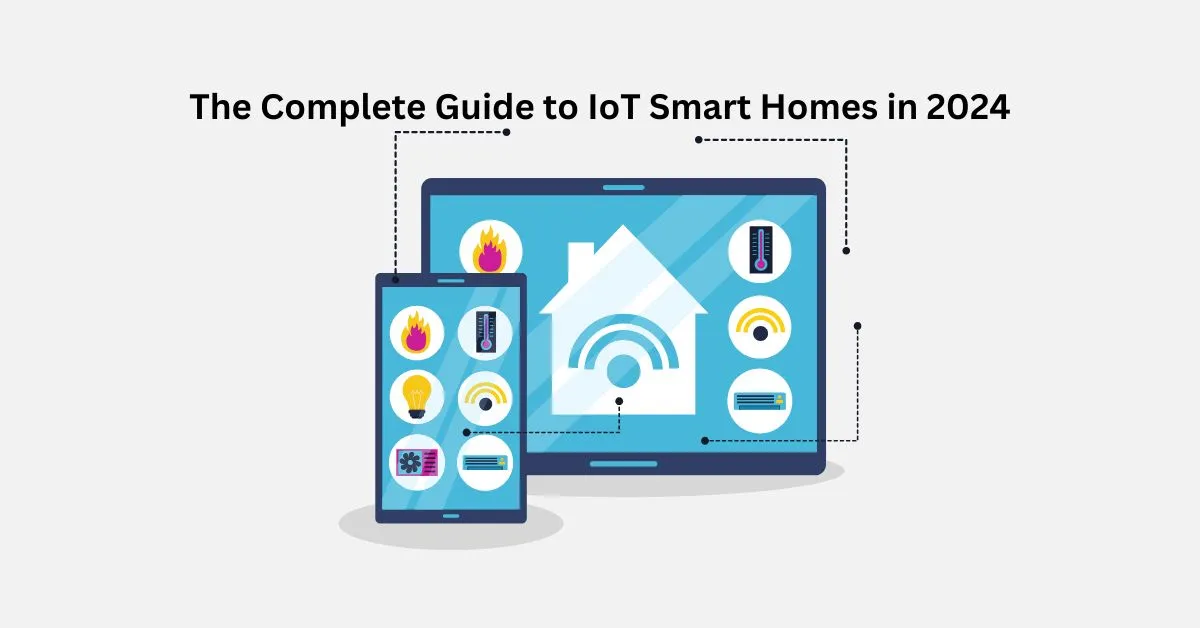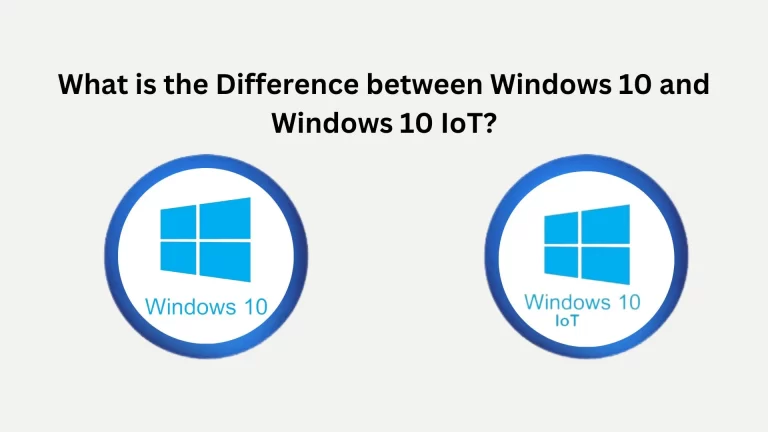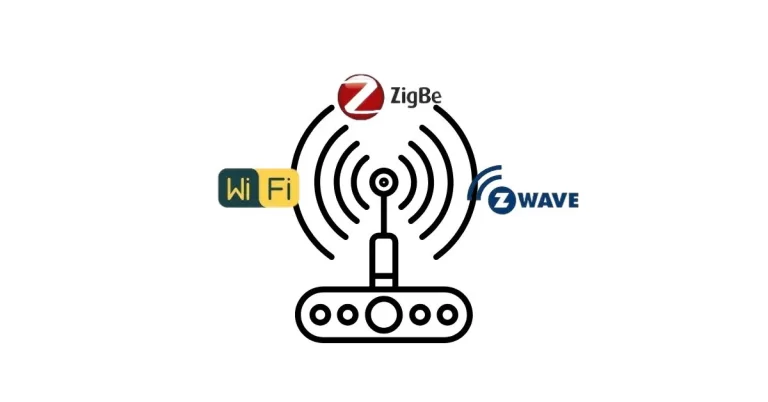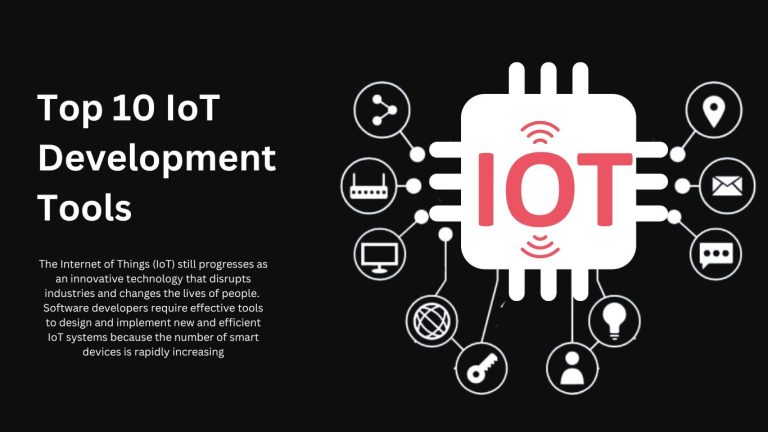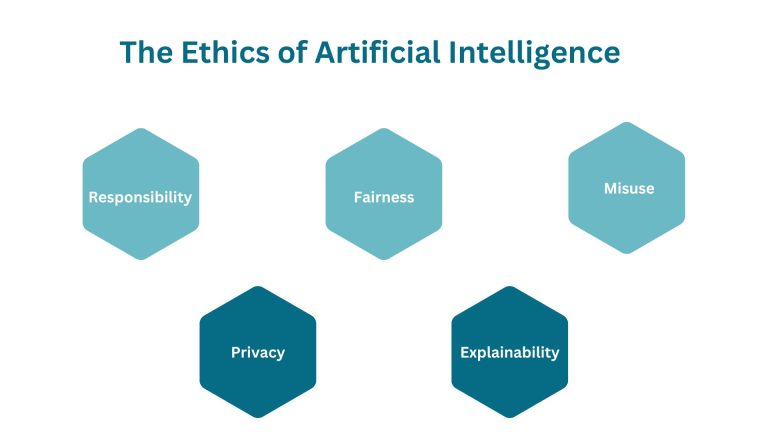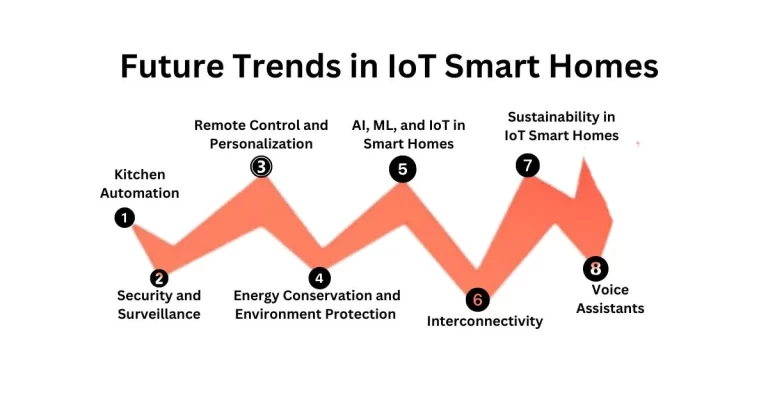The Complete Guide to IoT Smart Homes
1. Introduction
Smart Homes with the Internet of Things are quickly changing the way humans live. It is doing it by enhancing comfort, safety, and efficient energy consumption. This guide aims at discussing the importance of IoT in today’s home automation with a complete guide.
Smart home technology is a vast area that can be controlled through voice commands using devices like Alexa or Google Assistant or can perform tasks such as turning on/off the lights, and adjusting the temperature when the security system is activated, indicating the absence of people. Smart home products focus mainly on controlling convenience and helping the homeowner avoid spending time on tasks they do not wish to do or which are repetitive.
What Are Smart Homes?
Smart homes are controlled with WiFi-connected devices through a mobile application or voice commands using Alexa or any other smart home protocols. With these devices, one can automate his or her lighting, heating/cooling, and door locks. Smart homes have gained popularity in the recent past because they make work easier, are cheaper, and more efficient.
What is Smart Home Automation?
Smart home automation is the ability to set up a chain between connected devices and systems, and the degree of complexity can be adjusted to the user’s needs. The primary aim of smart home technology is to improve convenience, boost energy efficiency, and strengthen home security. Smartphones control the coordination of different technologies and create a unified and effective environment for living in these smart homes.
Looking to enhance your smart home experience? Read further for expert tips.
Energy Efficiency with IoT Smart Homes: Tips and Devices
2. Benefits of IoT Smart Homes
There are many advantages of IoT Smart Homes: convenience, energy saving, security, and individuality. These connected devices make it possible for the homeowner to have a more efficient way of living in their homes.
What are the Advantages of IoT in smart homes?
These technologies based on IoT are aimed at optimizing different processes in a house, including mainly heating and cooling, feeding the pets, managing appliances and lighting. With IoT technology, all these devices are connected to a single network and later can be controlled and monitored remotely.
Advantages of IoT in smart homes
- Enhanced convenience
- Optimized energy efficiency
- Strengthened security
- Cost-effective
- Remote accessibility
- Personalized living experience
- Enhanced accessibility
- Eco-friendly
- Seamless uninterrupted integration
Don’t stop here! Learn more about the benefits and challenges of smart home technology.
Challenges in Implementing IoT Smart Home Technology
3. Key Components of IoT Smart Homes
Key components are lighting, appliances, security and hubs, etc.
Centralized Control Hub
The control unit is the central control point of a home automation system similar to the brain of a human body. It oversees and coordinates all connected devices, enabling seamless communication and efficient operations. Usually, it is connected to the home network wirelessly. The hub enables users to control and track devices through a single app, for example, a mobile or web application.
Sensors and Detectors
Sensors and detectors are the input devices of the system that are used to gather and collect important information for automation. Common types include:
- Temperature Sensors
- Moisture Sensors
- Motion Detectors
Smart Devices, User Interface and Appliances
These devices offer flexibility and personalization to a system and fit in perfectly as their place requires. Examples include:
- Smart Thermostats
- Smart Lighting
- Smart Locks
Voice Assistants
Voice assistants like Amazon Alexa and Google Assistant make it easy for users to manage smart home features using simple voice commands. Tasks like adjusting lighting, playing music, or obtaining weather updates become hands-free and intuitive.
Voice Assistants in IoT Smart Homes: A Complete Guide
Security Systems
Modern security systems incorporate IoT-enabled features like:
- Surveillance cameras for monitoring.
- Door and window sensors to detect unauthorized entry.
- Alarms and smart locks for comprehensive protection.
Communication Protocols
Devices within a smart home communicate using various protocols such as:
- Wi-Fi: High-speed, wide-range connectivity.
- Bluetooth: Short-range, low-power connections.
- Zigbee and Z-Wave: Energy-efficient protocols for interconnected smart devices.
Unlock the power of voice assistants in smart homes with our complete guide to voice assistants in IoT.
Understanding IoT Protocols: Zigbee, Z-Wave, and Wi-Fi
4. Interoperability and Integration
Seamless communication between various IoT devices is crucial for operating a smart home system. Some of these main protocols include Zigbee as well as Z-Wave which assist in making a standard.
The real value of IoT in smart homes is not in the ability of individual devices and systems to operate autonomously but rather in the ability of these devices and systems to work together. This integration creates the foundation of a seamless, fully automated smart home environment that greatly improves the level of comfort, energy conservation, and security.
Integration
The integration concept is applied to integrate different domains, devices, applications, or databases into one system. For example, connecting a smart thermostat with a home automation hub allows the setting of the temperature based on times of the day or a user’s inclination.
Interoperability
Interoperability allows the devices to communicate regardless of the manufacturer or protocol they are operating on. This functionality enables the consistent sharing of data and promotes a synchronized setting.
Key benefits of interoperability include:
- Ease of use
- The ability of devices from different brands and using different protocols to work together efficiently.
- Smart elements like, autonomous predictive responses, machine learning technique which can learn the need of the user.
Advantages of Integrated Smart Homes
The integration and interoperability of IoT systems offer numerous advantages, such as:
- Increased Energy Efficiency
- Enhanced Security
- Greater Convenience
- Environmental Control
Challenges and Opportunities
Despite rapid technological advancements, achieving seamless integration and interoperability in IoT smart homes poses challenges:
- Protocol Diversity
- Security Concerns
- Integration Complexity
- Technologies and Standards for IoT Smart Homes
IoT Protocols
- Zigbee and Z-Wave
- Wi-Fi and Bluetooth
- Home Automation Hubs
- Voice Assistants
- Open-Source Platforms
For more insights on smart homes and IoT applications, check out our related articles.
Choosing the Best IoT Smart Home Ecosystem
Choosing the Best IoT Smart Home Ecosystem
Integrating Renewable Energy Solutions in IoT Smart Homes
Choosing the Best IoT Smart Home Ecosystem
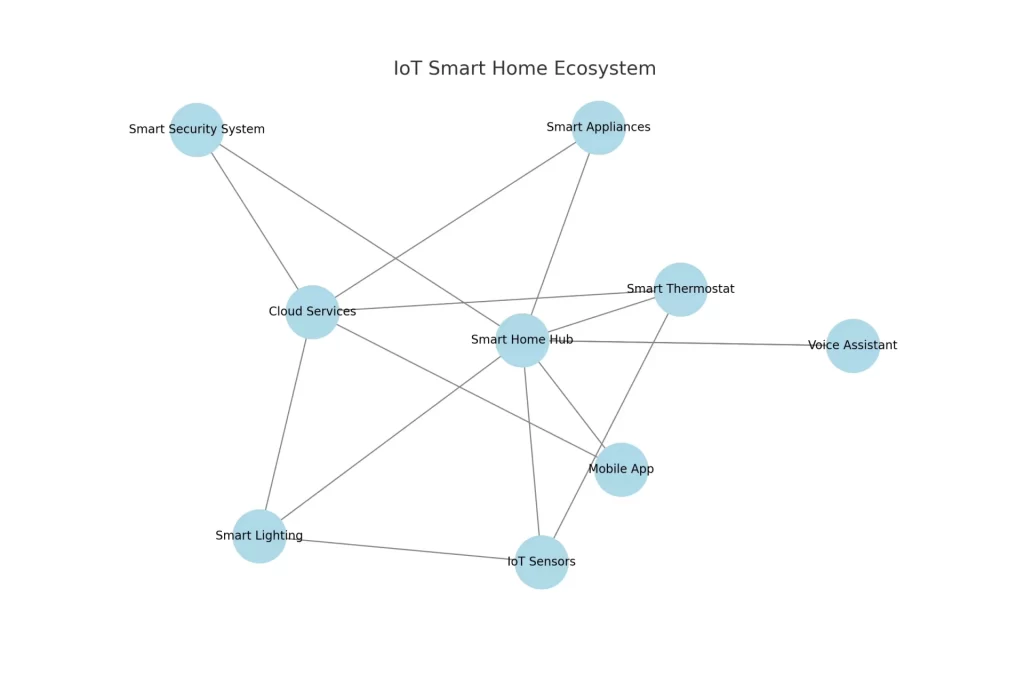
5. Security Considerations for IoT Smart Homes
IoT devices are associated with security threats like any other technology. It is crucial to ensure to apply the right measures if you crave to enhance security in your home.
Smart homes that have adopted the use of IoT devices have impacted daily life as a whole but also pose a unique challenge namely the security of data. Smart devices like refrigerators, coffee makers, heating systems, and cars are data collectors that collect personal data. Each device and the overall network must be protected adequately to protect this collected personal data.
As of now, there are over 7 billion IoT devices around the world, and these systems are attractive to hackers. The smart home is a network of interconnected devices and therefore requires constant protection against various threats.
Vulnerabilities and Cyber Threats
Smart locks, surveillance cameras thermostats, and other connected are vulnerable to different cyber threats. These threats encompass:
- Malware
- Hacking
- Unauthorized Access
Mitigating Security Risks
Effective risk mitigation in IoT smart homes requires the implementation of several strategies:
- Strong Password Policies
- Regular Firmware Updates
- Robust Encryption Protocols
- Network Segmentation
- Manufacturer Accountability
Read more about the security of IoT smart homes with our detailed article…
How IoT Enhances Smart Home Security
How to Maintain Security in Your IoT Smart Home
6. How to Build a Smart Home
Building a smart home involves several steps:
- Identify Your Requirements: Start with the identification of the functions or areas of your house that you would like to automat.
- Select Compatible Devices: Choose options and manufacturers that are easily integrated and, preferably, use the same set of components.
- Establish a Central Control Hub: Installed a main control center; and a smartphone application in order to control all connected intelligent gadgets.
- Install and Configure the Devices: Follow the manufacturer’s instructions strictly to connect each device appropriately to your home network.
- Personalize Automation: Optimize the smart home automation routines and the schedule for the best results or performance and usability.
Ready to build your smart home? Continue exploring more about smart homes and home automation…
Best Smart Home Hubs for Seamless Automation
7. DIY Smart Home Automation
DIY projects are a good way for people who want to set up their smart home on their own. There are many resources available for beginners.
Home automation or smart home technology or domotics is the use of building automation technology in homes.
This technology allows for the management of systems like lighting, and heating including smart thermostats, ventilation, air conditioning, and security, and home appliances like washing machines, dryers, stoves, and refrigerators or freezers.
Most of these appliances use Wi-Fi for their control and monitoring from a distance.
DIY Smart Home Automation enables homeowners to make their homes smart by integrating technology into the home without the need for professional help and at a lesser cost than professionally installed systems. Laid-back over-ear comfort lovers will also find this kind of approach appealing due to the ability to create preferred and functional setups.
Contemporary home automation systems are made up of a set of sensors and switches connected to a central device, often called a ‘gateway’. This hub provides a central point of control for the system and can be operated through several interfaces such as wall-mounted touch panels, smartphone and tablet applications, or through a web browser. These systems typically rely on cloud services for the purpose of remote access.
Read more and discover easy and exciting DIY IoT smart home projects that are perfect for beginner
DIY IoT Smart Home Projects for Beginners
8. Future Trends in IoT Smart Homes
In the future, developments in AI and the use of universal standards will define the future of smart homes and the home automation industry.
The future smart homes will also focus on integration, integration of voice control, and integration of health-related applications. These technologies are gradually merging and are likely to revolutionize residential living, making it safer, more efficient, and more personalized.
Now, let’s look at the trends and forecasts that will define the smart homes of the future of smart homes.
- Advanced AI Integration
- Interoperability and Standardization
- Enhanced Security Features
- Energy Efficiency and Sustainability
- Voice Control and Natural Language Processing
- Health and Wellness Surveillance
- The use of Augmented Reality (AR) and Virtual Reality (VR)
- Edge Computing
- Kitchen Automation
- Security and Surveillance
- Remote Control and Personalization
- Energy Conservation and Environment Protection
- AI, ML and IoT in Smart Homes
- Interconnectivity
- Sustainability in IoT Smart Homes
- Voice Assistants
- Gesture Recognition: Intuitive and Easy to Operate Mobile Device Management
- Health-Focused Applications
- Robots for Home Assistance
Discover the future of smart homes with our detailed articles on connected devices, automation, and sustainability.
Future Trends in IoT Smart Homes
9. Eco-Friendly Solutions in IoT Smart Homes
The use of IoT technology also helps in encouraging sustainability in homes in the meantime homeowners can track their energy usage.
All the advanced technologies (devices) of smart homes result in higher energy consumption and thus have a greater impact on the environment than a regular house. What we have discovered is that in most cases the opposite is true. Lighting control, window treatments, climate control and other options that are available in smart homes help you reduce your energy bill and make your home more environment-friendly.
The future of smart home technology is paving the way for eco-friendly innovations that prioritize sustainability. Batteries store solar energy to provide energy for a home within a day. On the other hand, the micro-grid smart home energy system allows homeowners to produce their own power. Other smart home technologies are yet under development to assist homeowners in improving their energy conservation too.
Smart home devices that are environmentally friendly make task execution easier while at the same time supporting international objectives on the sustainability of the environment.
You can read more about smart home devices that are environmentally friendly here.
Eco-Friendly Smart Home Devices : Go Green with IoT
10. IoT Smart Home Technologies
IoT (Internet of Things) technologies are changing the meaning of home living by turning conventional homes into smart homes. These technologies work together through the use of different devices and systems to offer high levels of convenience, energy efficiency and security.
From morning wake-ups to bedtime routines, IoT technologies enhance your daily life by anticipating and catering to your needs. For example, smart homes can control the light based on your biological clock and the energy consumption based on your schedule. This vision of the future where homes are smart and self-aware is made possible by the Internet of Things technologies.
Some key examples of IoT smart home technologies include:
- Communication Protocols (e.g., Wi-Fi, Bluetooth, Zigbee, Z-Wave)
- Edge Computing
- AI-Powered Systems
- IoT Mesh Networking
- Energy Management Systems
- Gesture and Voice Recognition Systems
- Augmented Reality (AR) and Virtual Reality (VR)
Read more about seamless, high-speed internet throughout your home with mesh Wi-Fi systems
Ensuring Blazing-Fast Connectivity with Mesh Wi-Fi Systems
11. Overview of IoT Smart Home Devices
The Internet of Things (IoT) is critical in the improvement of the functionality, convenience, and effectiveness of our lives. It is revolutionizing the method in which we communicate with our households and individual devices, as well as industries including healthcare, manufacturing, and transportation.
IoT-enabled smart home devices are particularly significant due to their ability to improve various aspects of daily living, including:
- Convenience: These devices enable one to control and even automate some of the activities in the day-to-day activities.
- Security: Security systems that are controlled by IoT present real-time monitoring and alarms for security purposes.
- Energy Efficiency: Smart devices can be set to work at their best efficiency to reduce energy use and lower the costs of utilities.
- Personalization: IoT devices are capable of learning and adapting to the users’ preferences, which makes the experience more personalized.
- Safety: Automated controls make IoT safe by including areas like smart locking and surveillance systems with security cameras that offer alerts on an event basis.
- Comfort: With the integration of IoT, homes can be made more comfortable and easy to live in.
- Context Awareness: Smart devices’ capability to perceive contextual factors greatly enhances the comfort and security of the users.
Curious about the best smart home devices? Continue reading to discover the top products and how they can transform your living space.
Top IoT Devices for Smart Homes in 2024
12. Example of IoT Smart Homes
Smart home systems provide a setup where many devices are linked and managed from a central point and therefore residents can control their homes from a distance. Here are some examples of IoT-enabled devices commonly found in smart homes.
- Smart Lighting
- SmartThings
- Amazon Alexa
- Smart Locks
- Contactless Doorbell
- Google Home
- IoT Smart Meters: These devices monitor the usage of utilities such as electricity and water and help to give information on daily usage.
- Set-Top Box: An IoT-enabled set-top box is a device that enables you to schedule the recording of television programs from a distance, thus increasing flexibility in entertainment control.
Expand your knowledge about home automation by exploring our in-depth resources and find out how to create your own smart home routines, how IoT affects health and what design trends are currently popular in smart homes.
Smart Home Automation: How to Create Routines and Scenes
The Role of IoT in Smart Home Health Monitoring
The Future of Smart Home Design: Trends to Watch
Conclusion
The use of IoT technology in smart homes has many benefits. This complete guide to IoT smart homes offers a general overview of different aspects of IoT in smart homes and invites readers to delve into the articles connected to the topic. IoT smart homes are alive, and they are bringing significant transformations and revolutions in people’s lives. These smart devices make our lives easier in performing daily activities or even helping us to save energy as well as keep us secure.
With technology advancing as it is, there are a lot of possibilities for even smarter and greener homes that will suit our (planet) lifestyles. The prospects of IoT in smart homes are not only to make our lives easier but to build new intelligent and environmentally friendly environments. The smart homes are here to stay and it is only the beginning of the smart home automation revolution.
Picture a house that adapts to your desires, a house that is intelligent beyond the terms given to modern homes. That is what IoT smart homes are all about. From the moment you wake up to get a perfect cup of coffee on your table, to the home you live in being safe and energy efficient, IoT is changing how we live. It’s not just technology; it’s a complete transformation of your lifestyle.
FAQs
What is an IoT Smart Home?
An IoT smart home is a home that is equipped with internet-enabled (connected) devices that help in performing tasks, making life easier, secure, and energy efficient.
How Do IoT Smart Homes Work?
IoT smart homes consist of devices, sensors, and hubs that are connected and can exchange data through Wi-Fi, Zigbee, or Bluetooth, and can be controlled through applications or voice commands.
What are the advantages of IoT smart homes?
Some advantages include convenience, energy effectiveness, security, affordability, accessibility from remote areas, and the customization of a home environment.
What are the typical IoT Smart Home Devices?
Examples of smart devices are smart lighting, smart thermostats, surveillance cameras, smart speakers, smart locks, and smart home entertainment systems.
What are the components of IoT smart homes?
These are control centers, smart appliances, such as lighting and thermostats, security systems, hubs, sensors, and communication interfaces.
Which IoT Smart Home Platforms Are the Most Popular?
Some of the well-known ecosystems are Amazon Alexa, Google Assistant, Apple HomeKit, and Samsung SmartThings.
How do smart home devices communicate with each other?
Devices use capabilities such as Zigbee, Z-Wave, or Wi-Fi to connect hence enabling integration and compatibility at its best.
What are the future trends of IoT smart homes?
New directions are intelligent personalization, increased security, environment-friendly devices, and infusing AR/VR into devices or gadgets.
How to Create an IoT Smart Home?
An IoT smart home is created by choosing devices that are compatible with each other, creating a central control point, and programming the home to function in a coordinated manner.
What are the possible security threats of smart homes IoT?
Security threats are threats such as hacking, unauthorized access, and attacks from viruses or malware. Some of the measures for risk control are encryption, safe networks, and standard firmware upgrades.

